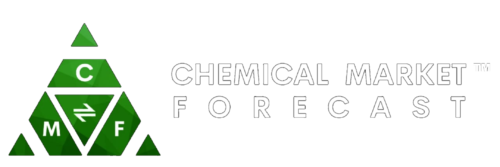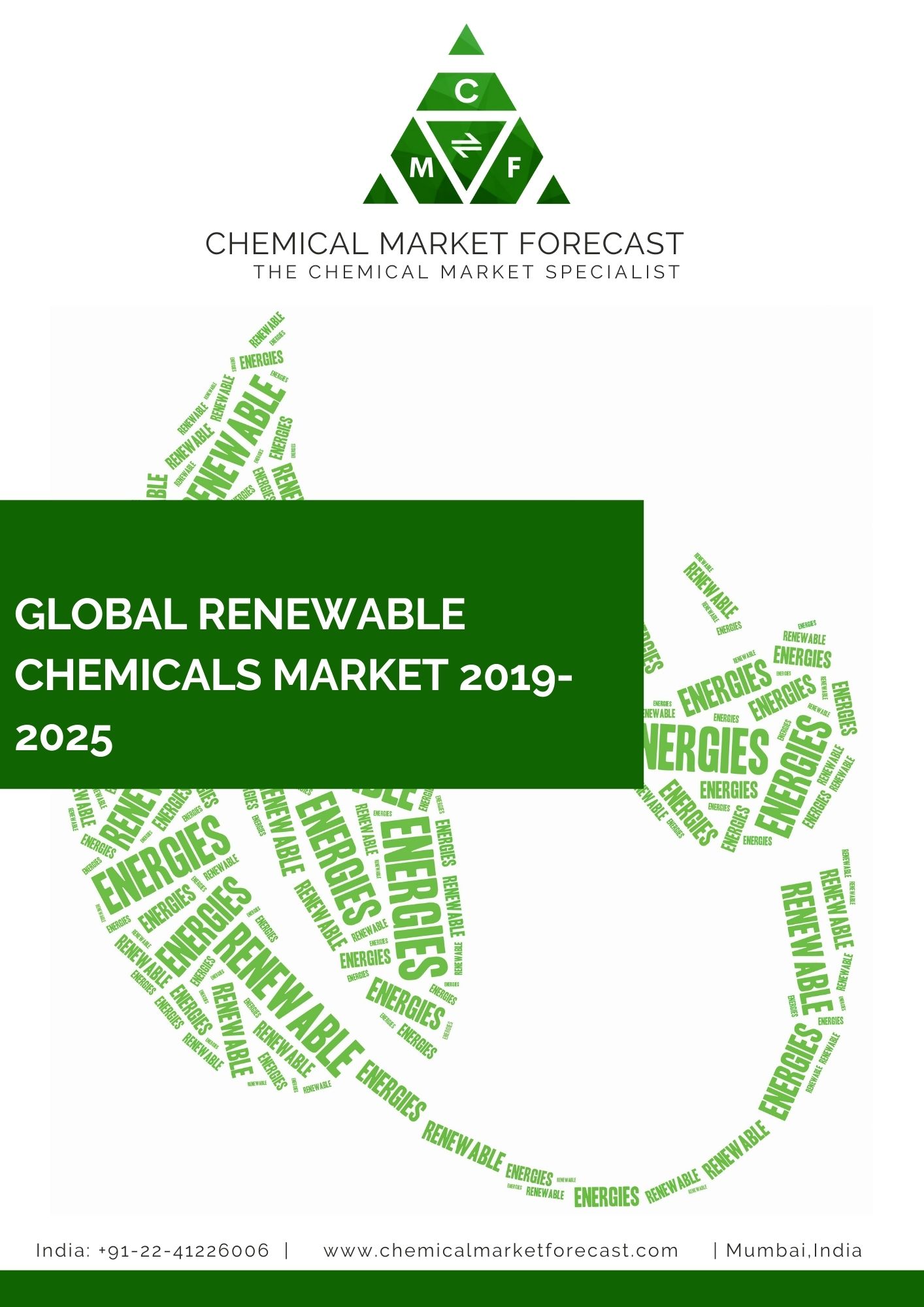Global Renewable Chemicals Market
Chemicals obtained from renewable feedstock sources are known as renewable chemicals. The feedstock includes substances like agricultural feedstock, agricultural waste, organic waste products, biomass, and microorganisms. These chemicals are ecologically sustainable because of which they support the growth of a circular economy. The renewable chemicals can be segmented as monomeric and polymeric compounds. These chemicals are used as a direct substitute for petrochemicals.
The Global dependence on oil as a source of energy augments the growth of this market positively. The induction of biofuels and technologies that promote the use of non-exhaustible sources of energy has been increasing due to rising environmental awareness. Regulations that focus on the reduction of carbon footprint accelerate the growth of this market. Additionally, the prices associated with petroleum and its derivatives are volatile. Biofuels on the contrary are not price sensitive.
This report focuses on the era of green technology. This report aims on the value chain analysis for the renewable chemicals market. Chemical Market Forecast portrays the change in market trends and the expanding applications associated with this sector. The renewable chemicals market is expected to act as a viable substitute for the petrochemical sector. The impacts of upcoming technology on the economics associated with this industry has also been studied widely. The market has been segmented by product type, region, and application to study the shift in line for market dynamics. The optimization of existing technology and the cost breakdown for every stage of the manufacturing process has also been provided within this report.
The chemical sector contributed USD 5.7 Billion to the global GDP in the year 2019. The renewable chemical segment contributes between 10-13% of the overall chemical generation. A data analysis based on both primary as well as secondary research has been fabricated to derive conclusions within this report. Bioeconomy is an important segment of ecology and sustenance. The company VTT has been trying to devise methods through which biochemicals can be synthesized via waste products. Research is also being conducted to develop renewable chemicals from chemicals such as CO2 and biogas methane thus paving the path towards the C1 economy.
As the technology used for the production of renewable chemicals progresses, the value chain associated with this market also increases. Increased levels of production would lead to a rise in the application of these chemicals instead of petrochemicals. In addition to bioenergy, the development of fast pyrolysis improves the economics associated with this market. The two-stage production process helps in the generation of higher-value chemicals. Technologies that make use of forest residues to synthesize biochemicals are also being utilized increasingly within the market to scale up production. Gasification, Fischer-Tropsch, and aromatization technologies have been used to produce α-olefins and BTX (benzene, toluene, and xylene).
Methods for the production of methane and methanol from biobased hydrogen and CO2 are also being devised by industries. Industries are also focusing on developing methods through which polyols and polyurethanes can be produced from CO2. Substances like polyurethanes are increasingly used within the construction sector. Moreover, the compound is also used by refrigerators due to its insulation properties. Biological systems technology is being used in order to devise methods for the development of bioplastics from CO2 and biogas.
In the year 2015, the alcohol segment accounted for roughly 80% of the overall renewable chemicals market. The biopolymers segment on the contrary accounted for approximately 5% of the global renewable chemicals market. Bio-PET is one of the fastest-growing segments within this market owing to its increased applications. The industry offers opportunities like new generation feedstock and enhanced process yields. The technology offers avenues for increased collaborative research based on this market.
The price associated with renewable chemicals is higher than conventionally developed substances owing to the complex production process. The use of high technology in order to convert sources of waste to fuel and biochemical products. Regions like APAC have been focusing on research associated with this segment to facilitate the growth of the renewable chemicals sector. Industries have been trying to develop alternative sources of raw material to increase the supplier margins. The availability of cheap labor and raw materials within APAC extends the growth associated with this market. China, Japan, and India are some major countries propelling the market for renewable chemicals in the Asia Pacific.
The trash collection infrastructure within regions like Africa and Asia are relatively poor because of which plastic pollution is seen to be one of the biggest issues. Despite the ongoing environmental problems, global plastic production is poised to attain a value of 600-650 million tonnes pa. Moreover, plastics are made via petrochemicals. Owing to the increased awareness amongst people, the bioplastics market is hereafter expected to gain momentum in the coming years. Bioplastics are developed from Biobased feedstock. A key example of innovative within the field of Bioplastics include polyhydroxyalkanoates (PHA). The substance is typically produced from microorganisms.
SCOPE:
The report,” Global Renewable Chemicals Market 2019-2025” provides a comprehensive analysis of the changing market trends within this sector. The report covers the value chain and supply chain analysis for this market along with a scenario-based forecast. The study period for this report ranges from 2019-2025, while the forecast period lasts from 2021-2025.
This report is aimed at:
- The key drives, restraints, and challenges of this market have been discussed.
- The change in market trends and dynamics have been analyzed.
- The high growth markets have been identified.
- The opportunities provided by this market and scenario analysis based on them have been covered.
- The supply chain analysis and the value chain for this sector have been comprehensively discussed.
- The impacts of the shifting dynamics on the forecast analysis have been covered.
- A strategic competitive mapping of this market has been provided.
- PESTLE and SWOT analysis have been used to study the competitiveness within this sector.
- The consumer intake and supplier margins have been assessed
Reasons to buy this report
- Existing players of this market can use this report to study the impacts of all the drivers, restraints, and challenges within this market.
- Potential players of this market can use this report to gain a comprehensive view of the upcoming technologies.
- Logistical Suppliers can use this report to study the supply chain and the value chain associated with this market.
- Industry players can use this report to analyze the cost bifurcation for the manufacturing processes used.
- Changes in the consumer behavior can be studied through this report by key companies.
- COVID-19 and its impact on this market can be assessed.
Who is this report for:
Industry Professionals: Can use this report to understand the change in market dynamics and it impacts the upcoming market trends.
Financial Institutions: Can use this report to study the high opportunity segments in order to strategize funding.
Technical Universities: Can use this report to encourage students to know the commercial aspect of technical learning.
Technology Innovators: Can use this report to study the drawbacks of the current technologies to synthesize optimized systems.





